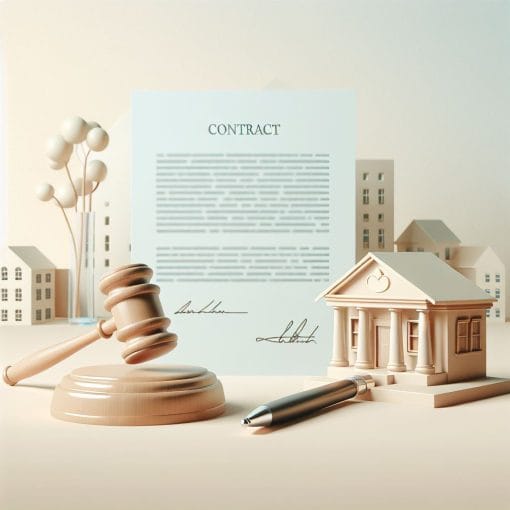In civil litigation, the limitation period is often the first and most critical hurdle to address. For a plaintiff, proving that a claim falls within the limitation period is essential, while for a defendant, asserting that the claim is time-barred is typically the first line of defence.
In a previous blog post, we touched on limitation periods in the context of estate litigation. This article, however, will provide a concise overview of limitation periods in general civil litigation, focusing on three key areas:
- Fundamental concepts under the Limitations Act
- Exceptions under the Limitations Act
- Unique and noteworthy limitation Periods
It’s important to note that limitation periods are a nuanced, complex, and highly sensitive topic. Even seasoned lawyers approach this subject with extreme caution, often limiting their discussions to highly specific cases. This blog is not intended to provide legal advice but rather to offer a broad introduction to the basic principles of limitation periods. If you have specific questions or concerns, consult your litigation lawyer promptly.
Under Ontario law, most civil claims must be commenced within two years from the date the claim was discovered. This means that if a person suffers a financial loss, injury, or other damage, they have a maximum of two years to initiate legal action.
If they fail to do so, their claim will likely be barred, meaning they lose the right to sue. This rule encourages timely resolution of disputes and prevents defendants from facing claims indefinitely. However, the key question is when the clock starts ticking, this is where the concept of discoverability comes in.
Not all injuries, losses, or legal claims are immediately obvious. The law recognizes that a person may suffer harm but not realize it until later. s.5 of the Limitations Act sets out the legal test for when a claim is considered “discovered”, triggering the two-year limitation period.
A claim is discovered when the claimant knew or ought to have known the following:
- That they suffered an injury, loss, or damage;
- That the harm was caused by someone’s act or omission;
- Who the potential defendants might be; and
- That taking legal action would be an appropriate remedy.
This is an objective test, meaning the law considers not only what the individual actually knew but also what a reasonable person in their circumstances should have known.
For example:
- A patient undergoes surgery and experiences ongoing pain. They assume it is normal post-surgical discomfort. Two years later, they learn that a surgical instrument was left inside their body. The limitation period starts when they discovered (or ought to have discovered) the error, not on the day of the surgery.
- A business owner notices financial discrepancies in 2020 but only learns in 2023 that their accountant committed fraud. The limitation period begins in 2023, when they became aware of the fraud.
- A person suffers an injury in a car accident but is initially unsure whether the driver, a mechanic, or the municipality (for poor road conditions) is responsible. The things is, they don’t need to know with certainty, once they reasonably suspect who might be liable, the limitation period begins.
While discoverability determines when the two-year limitation period begins, Ontario law also imposes an absolute cut-off: no claim can be brought more than 15 years after the act or omission that caused the harm, regardless of when it was discovered. This is known as the ultimate limitation period.
This rule serves an important public policy function. On one hand, the law wants to give victims a fair chance to seek justice. On the other, it recognizes that people and businesses should not have to live in fear of lawsuits forever. Over time, memories fade, evidence gets lost, and it becomes unfair to expect defendants to defend themselves against very old claims.
In Ontario, there is no time limit for initiating civil lawsuits based on sexual assault. This means survivors can pursue legal action regardless of when the assault occurred. This provision acknowledges the profound impact of sexual assault, which may delay a survivor’s decision to come forward. The removal of limitation periods for these claims was solidified with the passage of Bill 132, the Sexual Violence and Harassment Action Plan Act, in 2016.
For individuals under 18, the standard two-year limitation period is paused until they reach adulthood. The clock doesn’t start until the person turns 18 and has a litigation guardian appointed. This ensures that minors have a fair opportunity to seek justice once they are legally recognized as adults.
If a person is unable to commence legal action due to physical, mental, or psychological conditions, the limitation period is suspended. The countdown resumes only when the individual regains capacity or a litigation guardian is appointed on their behalf. This provision protects those who are temporarily or permanently incapacitated, ensuring they are not unfairly barred from pursuing claims.
When parties agree to resolve a dispute through an independent third party, such as mediation or arbitration, the limitation period is paused. This suspension lasts from the date of the agreement until the resolution process concludes or is terminated by either party. This encourages alternative dispute resolution by ensuring that parties aren’t penalized for attempting to settle matters out of court.
Under s.14 of the Limitations Act, 2002, a potential plaintiff can serve a formal notice of possible claim to a potential defendant. This notice serves to:
- describe the suspected injury, loss, or damage that has occurred;
- identify the act or omission that allegedly caused the harm;
- specify the potential defendant’s involvement in the matter;
- warn that failing to act may result in the claim being barred due to the expiry of the limitation period.
This notice can be particularly useful in situations where the plaintiff is still gathering information but wants to ensure that their claim is preserved.
Importantly, an informal message, such as a casual email i.e. “hey by the way I’m goning to sue you”, is not sufficient. The notice must be a formal, written document that clearly outlines the nature of the claim.
Impact on Limitation Period:
Serving a Notice of Possible Claim can influence the starting point of the limitation period. Courts may consider the date of the notice when determining whether a claim was initiated within the prescribed timeframe. This can be especially relevant in cases where discoverability is in question.
Certain claims are not subject to any limitation periods. These include:
- Declarations without consequential relief:
- Seeking a court’s declaration on a legal status or right without asking for additional remedies.
- Enforcement of court orders:
- Actions to enforce existing court judgments or orders.
- Support under the Family Law Act:
- Proceedings to obtain or enforce spousal or child support.
- Undiscovered environmental claims:
- Claims related to environmental damage that remained undiscovered for an extended period.
These exemptions recognize the unique nature of certain claims, where imposing a limitation period would be unjust.
If another statute specifies a different limitation period for a particular type of claim, that period takes precedence over the general rules in the Limitations Act, 2002, provided the specific limitation is listed in the Act’s Schedule. This ensures that specialized areas of law have tailored timeframes suited to their contexts.
If the limitation period for a claim has expired, you cannot add a new party to an existing lawsuit concerning that claim. However, if there’s a simple error, like misnaming or misdescribing a party, corrections are allowed. This distinction prevents plaintiffs from circumventing limitation periods by adding new defendants late in the process, while allowing genuine clerical errors to be rectified.
There are provisions that allow parties to contractually manage risks and expectations regarding potential disputes, meaning parties can agree to modify limitation periods under certain conditions:
- Agreements before January 1, 2004:
- Parties could vary or exclude limitation periods entirely.
- Agreements on or after October 19, 2006:
- Parties can suspend or extend limitation periods, except for the ultimate 15-year period, which can only be suspended or extended if the claim has been discovered.
- Business agreements:
- In commercial contexts, parties have more flexibility to vary or exclude limitation periods, including the ultimate limitation period, provided the claim has been discovered.
Limitation periods are a vast and intricate topic in civil litigation. For a potential plaintiff, overlooking these deadlines can mean losing the right to seek justice altogether.
Beyond the general rules, numerous case law authorities and specific statutory provisions add layers of complexity, often leading to disputes over when a limitation period begins or ends.
For example, in cases involving real estate, such as when property is unlawfully transferred, the limitation period can vary significantly depending on the circumstances. Under the Real Property Limitations Act, the limitation period for recovering land is generally 10 years from the date the right of action arose. However, this can differ based on factors like fraud or the involvement of minors.
Another striking example involves personal injury claims against municipalities. If someone slips and falls on a poorly maintained sidewalk in Toronto, they must notify the City of Toronto within 10 days of the injury under s.42(6) of the City of Toronto Act, 2006. Failing to provide this notice within the 10-day window can bar the claim entirely, shocking, isn’t it?
These examples illustrate just how varied and critical limitation periods can be across different areas of law. If you believe you have a claim, consulting a litigation lawyer as soon as possible is crucial to ensure you don’t miss these deadlines. Acting promptly can make the difference between securing your rights and losing them forever.




